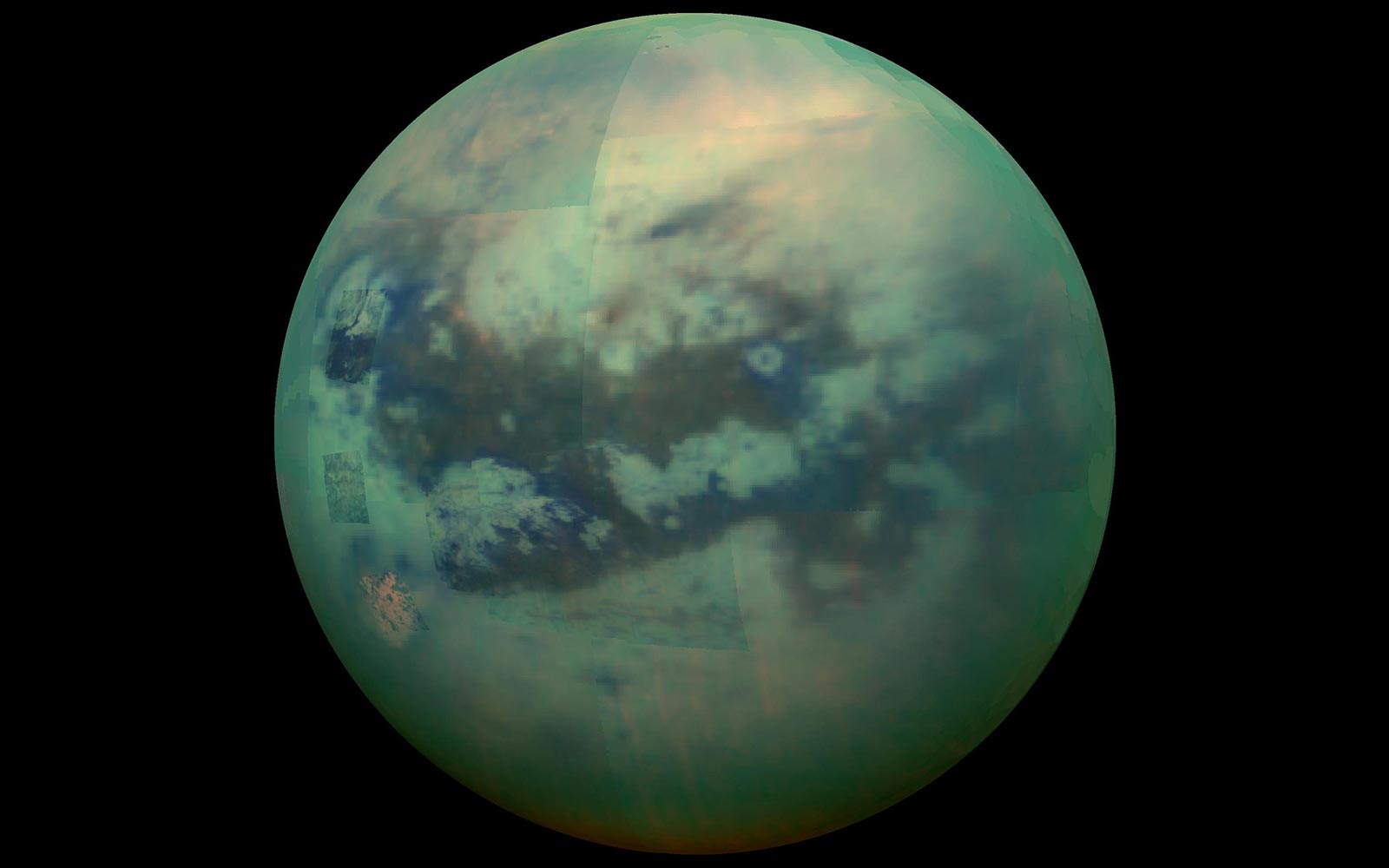Scientists recreate atmosphere of Saturn’s largest moon in tiny glass vials to look for signs of life
Titan, with its stable pools of surface liquid, acts as a natural laboratory to study the origins of life

Your support helps us to tell the story
From reproductive rights to climate change to Big Tech, The Independent is on the ground when the story is developing. Whether it's investigating the financials of Elon Musk's pro-Trump PAC or producing our latest documentary, 'The A Word', which shines a light on the American women fighting for reproductive rights, we know how important it is to parse out the facts from the messaging.
At such a critical moment in US history, we need reporters on the ground. Your donation allows us to keep sending journalists to speak to both sides of the story.
The Independent is trusted by Americans across the entire political spectrum. And unlike many other quality news outlets, we choose not to lock Americans out of our reporting and analysis with paywalls. We believe quality journalism should be available to everyone, paid for by those who can afford it.
Your support makes all the difference.A new study recreating atmospheric conditions on Titan, Saturn’s largest moon, has helped scientists to better understand conditions that may favour the origins of life on other planets.
Researchers from the Southern Methodist University in Texas have said Titan has a dense atmosphere and seasonal weather cycles like Earth but has a different chemical makeup.
This has led them to predict predict that the nitrogen and methane in Titan’s atmosphere would react to produce organic molecules under the effect of the Sun’s energy and Saturn’s magnetic field – and believe this may help to understand what conditions favour the formation of organic molecules on other planets.
The scientists revealed the fundamental properties of two organic molecules that are believed to exist on Titan – acetonitrile (ACN) and propionitrile (PCN) and, according to the study, the two molecules are likely to be abundant on Titan in a mostly crystalline form.
The molecules could create “highly polar nano surfaces” that may serve as templates for other organic molecules and be precursors to the formation of life.
While the properties of these two molecules on Earth conditions are “well known”, Dr Tomce Runcevski, the project’s principal investigator said, their characteristics under Titan-like conditions have not been studied – until now.
“In the lab, we recreated conditions on Titan in tiny glass cylinders,” he said.
“Typically, we introduce water, which freezes into ice as we lower the temperature to simulate the Titan atmosphere. We top that with ethane, which becomes a liquid, mimicking the hydrocarbon lakes that Cassini-Huygens found,” he added.
Cassini-Huygens was a 1997-2017 mission by Nasa to study Saturn and its moons.
As part of the research, Dr Runcevski’s team added nitrogen to the cylinder and introduced ACN and PCN to simulate the atmospheric rainfall.
They then altered temperatures slightly to imitate temperature swings on Titan’s surface and studied the crystals of the formed molecules formed.
“Our research revealed a lot about the structures of planetary ices that were previously unknown,” Dr Runcevski said.
“We found that one crystalline form of PCN does not expand uniformly along its three dimensions. Titan goes through temperature swings, and if the thermal expansion of the crystals is not uniform in all directions, it may cause the moon’s surface to crack,” he explained.
The researchers’ next step is to prepare different combinations of the two compounds, analyse their properties and compare them with the library of data collected during the Cassini-Huygens mission.
They hope this will help them to further understand the mineral makeup on Titan, which could provide valuable insights for Nasa’s 2027 mission to the Saturn moon.
Join our commenting forum
Join thought-provoking conversations, follow other Independent readers and see their replies
Comments